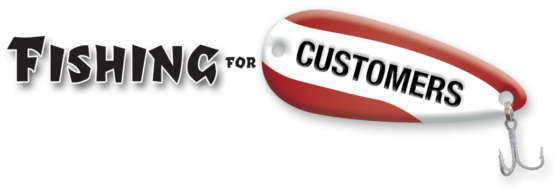I had a meeting with the owner of a coffee house in Spokane. We were talking about advertising. He asked an excellent question: “What message could we possibly use that would make people drive across town to buy coffee? There’s a coffee shop on every corner.”
I looked up and said “You don’t need people to drive clear across town. You have thousands of them walking by your store every day. Thousands. What we need to do is convince those people to walk in through your door.”
This is the difference between a transactional strategy and a relational strategy.
Transactional v Relational
Transactional shoppers believe that they know enough about the prospective purchase to make an intelligent decision. They’re mostly interested in getting the best price.
Relational shoppers worry that they don’t know enough and are concerned about making the wrong purchase. Relational shoppers are looking to find someone they can trust to advise them.
If a customer chooses to do business with anyone for reasons other than price, she’s shopping in relational mode.
Please don’t confuse “relational” with “relationship.” Perhaps she doesn’t know the store manager’s name. She’s never seen pictures of the cashier’s kids. She doesn’t even know whether the produce manager is married. She doesn’t have relationships with these people. She shops their store in a relational mode.
Maybe she chooses a grocery store for it’s produce. She doesn’t read the paper for the specials before she shops. She doesn’t bring “cents off” coupons to the store. She doesn’t even have one of their affinity cards which, at check-out, will be swiped through the till to “save you $6.23 this trip.” She is there because she likes their produce department. She’s shopping relationally.
Does she buy her gas at the station on the corner because it’s convenient? She’s shopping relationally.
Does she choose a dentist because he concentrates on elimination of pain? She’s shopping relationally.
If she watches Good Morning America instead of the Today show because she likes Diane Sawyer better than Katie Couric, she’s shopping relationally. (What? You don’t think that investment of your time has a cost?)
What if She Shops Transactionally?
That whole “We need a message strong enough to get people to jump in their cars and drive here the minute they see it (or hear it)” philosophy only works for businesses trying to force a specific sale RIGHT NOW. It’s a classic transactional strategy.
Those customers who might respond to such an appeal are operating in transactional mode.
Transactional shoppers are very price conscious. They will drive across town to find a better deal (perhaps not for a cup of coffee, but on anything that requires a significant financial investment on their part, they will).
The key to understanding transactional shoppers is to understand that they have no loyalty. They do business with you for this transaction only. Transactional shoppers consider the search for a great deal to be part of the fun.
The conventional wisdom tells you to drop price in order to grow market share. It doesn’t work. (Ever wonder why at least one of the major airlines is always in bankruptcy)?
So what does a business do in an attempt to drag shoppers clear across town? Right. They follow the conventional wisdom and drop the price. Often dramatically.
When successful, these transactional (call-to-action) advertisements generate a lot of traffic, and sell a bunch of merchandise. Unfortunately they make no significant profit, and give the shoppers no reason to ever come back. Many times these sales promotions aren’t successful. Perhaps most times they aren’t successful.
If you’re in a business with thin margins or if you’re selling commodities, like gas or donuts or coffee, what do you do? Drop the price below your costs? Lose a little on each sale and attempt to make it up in volume?
Reducing Price = Horrid Strategy
Reducing price is so unnecessary.
Most businesses have hundreds of shoppers driving past their businesses every day. Maybe thousands. Target those potential customers instead of trying to drag the transactional types across town.
You get the shoppers to turn in to your parking lot with when you implement a relational (top of mind awareness) ad campaign.
More specifically, this implementation has three requirements.
· It takes the commitment to make relational shoppers aware of you well before they need you.
· It takes the willingness to wait patiently until those people need what you’re selling.
· It takes the staying power to keep putting out your relational message. Day in, day out. Week after week.
Season after season you need to keep reminding people who you are, and why getting to know you is in their best interest.
And then, as those thousands of people walk by your business, a fair percentage of them will say “Hey, this is the place I’ve been hearing about. Let’s go in.”
When they become aware of the bait is the easiest time to hook ’em when you’re fishing for customers.
Your Guide,
Chuck McKay
 Your Fishing for Customers guide, Chuck McKay, gets people to buy more of what you sell.
Your Fishing for Customers guide, Chuck McKay, gets people to buy more of what you sell.
Need help choosing your most effective strategy? Drop Chuck a note at ChuckMcKay@FishingforCustomers.com. Or call him at 760-813-5474.


I think this is a great article. Most of the times shop owners forget the passing-trade, the answer to the problem is right in front of their eyes. Just give great value for money, great coffee and personnel that have passion for the coffee trade.
Most business owners spend a great deal of their time in the trenches and eventually they loose focus of the outside world. Just get back to street level.